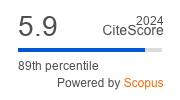Article | Open Access
Investigating News Deserts on the Content Level: Geographical Diversity in Swiss News Media
| Views: | 2996 | | | Downloads: | 1411 |
Abstract: With its diverse landscape of regional and local news media, Switzerland seems far from being a news desert. However, the centralization of editorial offices following the economic crisis of journalism has led to news outlets that share most of their content but appear under different names in different regions. This development has fostered fears about declining geographical diversity at the regional level in the news coverage of Swiss news media. We argue that this centralization by regional news outlets affects news content; it constitutes a specific process of news desertification, which is not aptly captured by news desert research’s focus at the outlet level. With our explorative study, we aim to analyze news deserts at the content level. We apply an automated geoparser to a manually annotated dataset of local news media articles (n = 5,173) published by six regional news outlets of two news organizations between 2016 and 2021 to determine the extent and development of geographical diversity in Swiss regional news media. The geoparser uses a weighted gazetteer-based approach to determine the most relevant locations of news articles within Switzerland. We find early signs of news desertification. At the output level, we observe a declining number of articles published by the analyzed outlets. At the performance level, we see a declining number of unique place names in the articles and more mentions per article. However, the diversity of place names in the coverage remains stable.
Keywords: geographical diversity; local journalism; media content concentration; news desert; news desertification; Switzerland
Published:
© Daniel Vogler, Morley Weston, Linards Udris. This is an open access article distributed under the terms of the Creative Commons Attribution 4.0 license (http://creativecommons.org/licenses/by/4.0), which permits any use, distribution, and reproduction of the work without further permission provided the original author(s) and source are credited.


